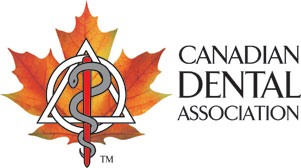This statement is a work-in-progress that will continue to be reviewed and revised as the understanding of and information on cannabis consumption and nicotine-based vaping products continues to emerge.
Recommendations:
CDA acknowledges that despite the known risks, patients may still choose to use these products. In such cases, CDA recommends that:
- Patients discuss their use of vaping or water pipes and consumption of tobacco, nicotine- or cannabis-based products with their dentist.
- Dentists discuss the current known and potential risks of exposure and consumption of tobacco, nicotine- and cannabis-based products, and vaping products with their patients; and recommend measures to promote cessation and reduce the harm caused by using these substances.
There is emerging scientific evidence that the risk of disease associated with using tobacco, cannabis, or vaping products in various combinations is likely greater than using one product. More research is needed to confirm the increase in risk.
Smoking:
Smoking is a practise in which a substance is burned and the resulting smoke is breathed and absorbed into the blood system. Smoking has a detrimental effect on every organ of the body, is a risk factor for many systemic diseases, contributes to poor oral and general health, and may result in premature death.
By-products of cigarette smoke damage blood vessels, which in turn causes inflammation. This can predispose a person to developing cardiovascular disease. Smoking causes higher rates of tooth decay, oral mucosal lesions, periodontal disease (i.e., receding gums, bone damage, tooth loss, jawbone loss) and other oral health problems. Inhaled smoke contains carcinogenic chemicals that cause lung and other cancers, including life-threatening oral cancers.
Smoking using a devise such as a waterpipe (e.g., hookah) does not reduce the risks associated with smoking. CDA advises against the use of waterpipe devices because users inhale and absorb a significant amount of toxic chemicals similar to cigarette smoke. These devices are known to cause dependence, cancer, and heart and lung diseases.
Nicotine:
All tobacco products contain nicotine. Nicotine stimulates the central nervous system and raises blood pressure, respiration and heart rate. Nicotine is harmful for everyone, particularly youth and pregnant women. Nicotine is an extremely addictive drug and can be harmful to developing fetuses. Nicotine can also lead to addiction and harm brain development in children and young adults into their early 20s.
Some vaping liquids contain much more nicotine than traditional tobacco products. The addictiveness of nicotine makes disease-causing tobacco products and vaping especially dangerous.
Cannabis:
Cannabis contains 500 compounds, 66 of which are cannabinoids—chemicals that interact with receptors in the brain. One cannabinoid, tetrahydrocannabinol (THC), causes the psychoactive effects that attract cannabis users. The federal Cannabis Act came into effect in 2018 and formally legalized the cultivation, possession, acquisition and consumption of cannabis and its by-products.
Cannabis smoking can result in periodontal complications, xerostomia (dry mouth), leukoplakias as well as increased risk of oral cancers. Cannabis contains many of the same carcinogens as tobacco. Cannabis is often smoked in combination with tobacco, which complicates attributing causality of resulting disease.
Cannabis use, especially through smoking, is associated with poor oral health, though causality is complicated by the fact that frequent users also tend to also use tobacco, alcohol, and other drugs. Although cannabis smoke does not include cavity-causing sugar, it does increase appetite for cariogenic snack foods, so regular cannabis users tend to have more cavities than non-users.
Vaping:
The long-term effects of vaping on general and oral health are not yet known. Current evidence suggests that vaping is a gateway to conventional cigarette smoking, especially in young people, and may increase the risk of heart damage and stroke in similar ways to cigarette smoking. Vaping has also been linked to cases of acute lung disease, some of which have been fatal.1
Vaping liquids containing nicotine were initially marketed as a safer alternative to smoking tobacco and as a tool for smoking cessation. Unfortunately, the long-term health consequences of vaping are not yet known. Cases of acute lung diseases caused by vaping have been diagnosed in the United States and Canada, some of which have resulted in death. The scientific literature is inconclusive on the benefits of vaping for smoking cessation.2
Vaping products containing nicotine were legalized in Canada with the passage of Bill S-5 in 2018, in part because the devices were readily accessible via the black market prior to this time. A 2019 study reported that the number of Canadian teenagers who indicated they had vaped in the last month grew by 74%, from 8.4% to 14.6%.3
Vaping liquids contain hundreds of different ingredients that are aerosolized into very small particles and then inhaled deeply into the lungs. There is little scientific data surrounding the long-term effects of inhaling nanoparticles by vaping. However, initial research suggests that some vaping-liquid flavourings are cytotoxins that cause damage to cells.
The specific risks of vaping liquids containing nicotine or cannabis on oral health are unknown but may be similar to that of tobacco products.
Smokeless Tobacco:
The use of smokeless tobacco products (also known as spit tobacco, snuff and chewing tobacco) is a known risk factor for periodontal diseases and a possible risk factor for oral cancer. Nicotine in these products is also addictive.
CDA endorses government action to reduce the potential harm to Canadians and:
- Supports efforts to ban all advertising and promotion of all tobacco, cannabis, and vaping products, along with other measures that would limit the use of these products.
- Urges that regulations prohibiting the sale of all tobacco, cannabis and vaping products to minors be strictly enforced.
- Urges the health of non-smokers be protected from as many public places as possible by continuing to ban smoking of tobacco and cannabis, and by applying similar restrictions to vaping.
- Encourages the development of educational programs aimed at preventing smoking of tobacco and cannabis and vaping among Canadians, particularly youth.
CDA Board of Directors
Approved: February 2005
Revised: February 2021
References:
- Centers for Disease Control and Prevention. Outbreak of Lung Injury Associated with the Use of E-Cigarette, or Vaping, Products. https://www.cdc.gov/tobacco/basic_information/e-cigarettes/severe-lung-disease.html#latest-outbreak-information (Accessed Feb 10, 2021)
- CADTH Rapid Response Report: Summary of Abstracts: Electronic Cigarettes for the Reduction or Cessation of Smoking: Clinical Utility, Safety, and Guidelines. https://www.cadth.ca/sites/default/files/pdf/htis/2017/RB1130%20E-Cigarettes%20Final.pdf (Accessed Feb 10, 2021)
- Hammond D, Reid LJ, Rynard VL, Fong GT, Cummings KM, McNeill A, Hitchman S, Thrasher JF, Goniewicz ML, Bansal-Travers M, O'Connor R, Levy D, Borland R, Gray N, White CM. Prevalence of vaping and smoking among adolescents in Canada, England, and the United States: repeat national cross sectional surveys. BMJ 2019;365: l2219.
* This statement excludes the use of traditional tobacco, which has a unique place for certain Indigenous peoples.











